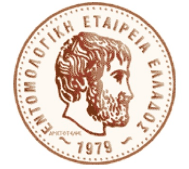Το καλοκαίρι του 1988 παρατηρήθηκε έξαρση της προσβολής των εσπεριδοειδών, και της σουλτανίνας σε μικρότερο βαθμό, από αλευρώδη. Η κύρια εστία εντοπίστηκε στην βορειοδυτική Πελοπόννησο. Στα δείγματα που λήφθηκαν από τις περιοχές Ξυλοκάστρου και Πύργου, διαπιστώθηκε η παρουσία του είδους Parabemisia myricae (Kuwana), για πρώτη φορά σε Ευρωπαϊκή χώρα. Ο αλευρώδης αυτός που ενδημεί σε γειτονικές χώρες της Βόρειας Αφρικής και της Μέσης Ανατολής προσβάλει ξυλώδη φυτά προκαλώντας κυρίως έμμεσες ζημιές από τις οποίες η σημαντικότερη είναι η ποιοτική υποβάθμιση των καρπών από την ανάπτυξη μυκήτων πάνω στα εκκρίματα του.Η βιολογία του έχει μελετηθεί σχετικά λίγο. Είναι γνωστό ότι τα θηλυκά γεννούν αποκλειστικά σε πολύ τρυφερή βλάστηση. Βρέθηκε ότι η γρήγορη ωρίμανση των φύλλων προκαλεί θνησιμότητα των ατελών μορφών. Αναφέρεται ότι ο βιολογικός του κύκλος στη διάρκεια του καλοκαιριού διαρκεί περί τις τρεις εβδομάδες.
(EL)
Citrus groves of Corfu had been attacked during the last decade by citrus whitefly Dialeurodes citri (Ashmead). It presumably expanded later, and it was found to cause a serious infestation on lemon trees of Achaia region during summer of 1986, while it disappeared later existing today only in very small pockets on ornamental citrus species in Attica area. Late in August 1988, the leaves of citrus trees, and to a lesser extent of grapevines, in the region of Corinthia, NE Peloponnesos, in South Greece were covered by larvae, pupae and adults of a whitefly that was different from D. citri. In autumn of the same year, it was noticed that the infestation of this new whitefly had expanded to other parts of Peloponnese such as Argos, Patras and Ilia region. Samples of citrus and grapevine leaves with nymphs of the insect were sent for identification to British Museum of Natural History. Dr. J. H. Martin identified the species as Parabemisia myricae (Kuwana) (Homoptera: Aleyrodidae), making the first record of the species in Greece. The species is a native of Japan and possibly of other eastern asian countries such as Taiwan and West Malaysia. Today, the insect has been recorded in USA (California), Cyprus, Israel and Turkey, Egypt (Martin personal communication) and it is a pest of woody plants, especially citrus trees and grapevines. The damage caused to the plants by this insect, as a feeder, can be serious in cases of large populations accompanied with problems associated with the development of sooty mould on the excreted honeydew. In the autumn of 1988, infestation was high (more than 20 nymphs/leaf) in Achaia and Corinthia regions of N. Peloponnese, causing great concern to citrus growers. This species of whitefly was not included in the lists of known plant pests of Greece. It is probable that it invaded Greece from Israel. P. myricae is a newly introduced pest in citrus growing countries and there is little information available on its biology and control. Most of the published data comes from Israel and California on the biology and biological control of the insect. Additional data have been published on flight behaviour, oviposition behaviour, and survival of young nymphs on leaves of different age citrus leaves. The adults of P. myricae are smaller than D. citri adults and they have a dusty blue gray or lavender appearance. The females oviposit on very young leaves, often in circles. Preference for oviposition on very young leaves seems to be related to properties of the leaf cuticle. Leaf age is a critical factor for survival of nymphs. This gives a good explanation for the observed high rates of mortality in spring for nymphs growing on rapidly maturing leaves. It has been observed that on orange trees less eggs are layed on the lower surface of the leaves, while on lemon trees they tend to be layed equally on both surfaces. Initially eggs are off-white, while after about one day they gradually turn to brownish and finally black, before they hatch. First instar crawlers settle on the surface of the young leaves with a preference to the lower surface. First flights of adults were noticed in this area in late February of 1989. By end of March early April the emergence of adults of the first 1989 generation had been completed. It seems that it produces a quite large number of generations during the year, as it requires only 21 days at temperatures fluctuating between 210oC and 17.3oC and 65-100 percent relative humidity, to complete its cycle in glasshouse. Being a pest of Citrus and grapevines (Vitis vinifera) it has also been found on hosts like Ficus, Persea, Prunus, Psidium and Thea. As a matter of fact it has also been found in small colonies on Prunus cerasi in Northern Peloponnese in autumn 1988. Work on the control of Parabemisia myricae with the insect growth regulator Buprofezin has started in Greece in 1988 and is expected to be concluded in 1990.
(EN)

